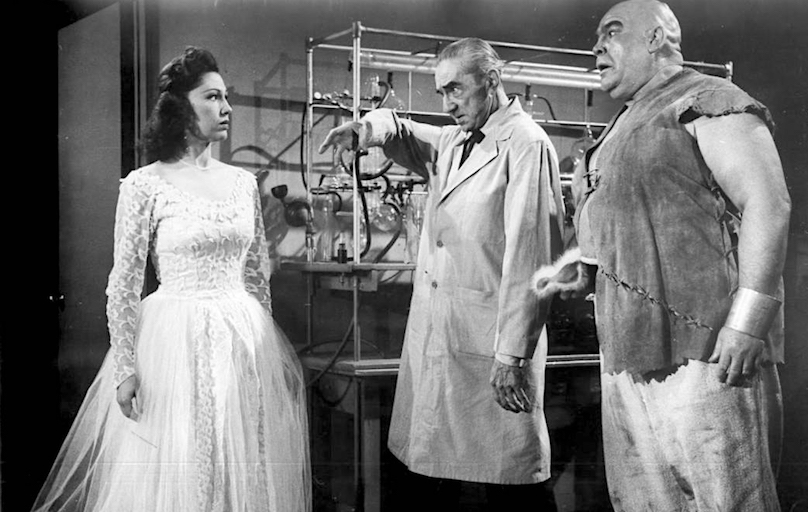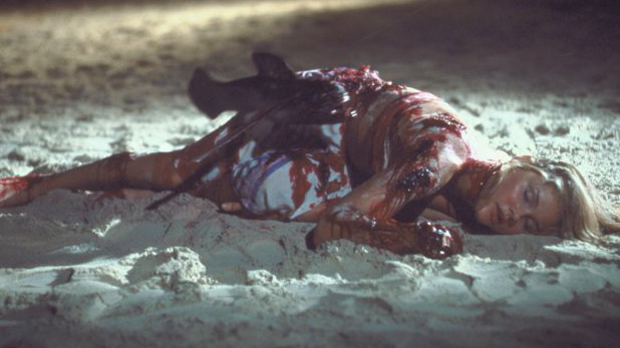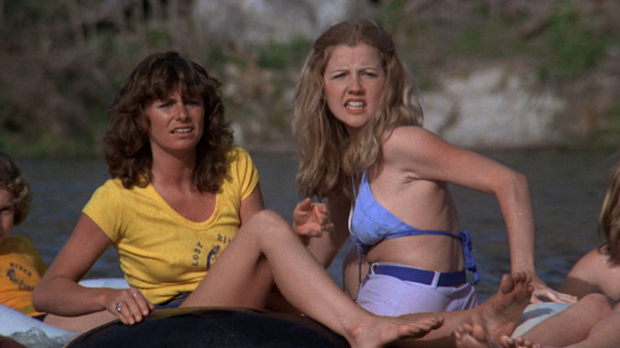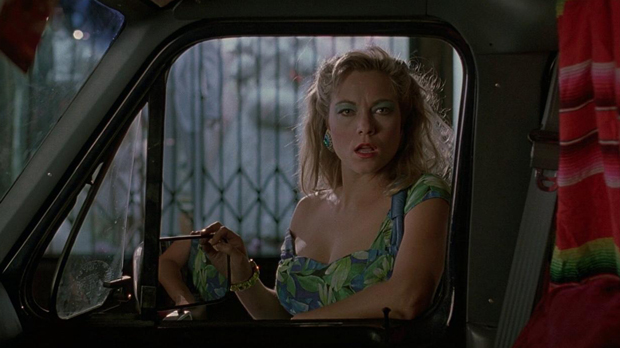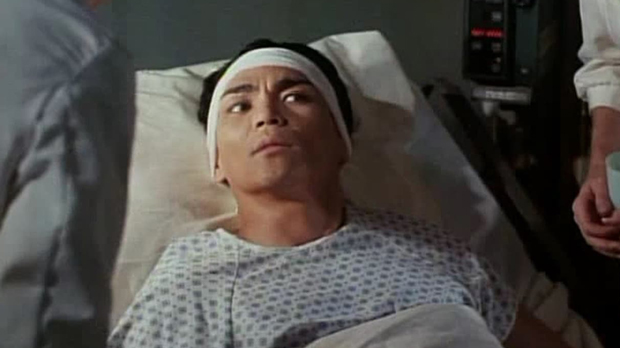
Bride of the Monster (1955) Banner Pictures/Sci-Fi-Horror RT: 69 minutes No MPAA Rating (violence, scary moments) Director: Edward D. Wood Jr. Screenplay: Edward D. Wood Jr. and Alex Gordon Music: Frank Worth Cinematography: Ted Allen and William C. Thompson Release date: May 11, 1955 (US) Cast: Bela Lugosi, Tor Johnson, Tony McCoy, Loretta King, Harvey B. Dunn, George Becwar, Paul Marco, Don Nagle, Bud Osborne, John Warren, Ann Wilner, Dolores Fuller, William Benedict, Ben Frommer. Box Office N/A
Rating: ***
Yep, another stinker from the king of dreck himself, Edward D. Wood Jr. (Glen or Glenda, Plan 9 from Outer Space)! This time it’s a feeble attempt at sci-fi-horror called Bride of the Monster. It’s one of those Atomic Age fright flicks that show audiences the scary side effects of nuclear energy, especially if it finds its way into the wrong hands as it does here.
The wrong hands belong to mad scientist Dr. Eric Vornoff, played by Wood’s idol Bela Lugosi (Dracula). Bride of the Monster (originally titled Bride of the Atom) would be the Hungarian actor’s final speaking role before his death in 1956. His gaunt appearance is the scariest thing in this lame-ass movie. At the time of filming, Lugosi was 72 and a full-blown morphine addict. In his defense, he gives it his all and manages to pull off a half-decent performance. He reads his lines like a real trooper, putting a lot of feeling into them. It’s not his fault that they were written by an untalented hack.
As per usual with Wood’s movies, the dialogue is awful to the point of unintentional comedy. That’s also a fairly apt description of Bride of the Monster. Wood uses less stock footage this time around, but that doesn’t necessarily make it better than his first effort, the transvestite drama Glen or Glenda. It only means Wood had to film more scenes of his own making which serve as further evidence of his obvious lack of talent. Bride of the Monster has many flaws, but its biggest problem is that it’s too talky. The many conversation scenes slow the picture to a crawl resulting in the longest 69 minutes you’re ever likely to experience.
Wood doesn’t get things off to a promising start and it goes rapidly downhill from there. Two hunters caught in a “raging thunderstorm” seek refuge at the supposedly abandoned Willow House. They find it occupied by Dr. Vornoff who repeatedly denies their request for shelter. When they attempt to use force, the doctor’s hulking mute assistant Lobo (pro-wrestler Johnson) shows up and scares them away.
There are rumors of a monster roaming the area and killing people. Twelve people have gone missing in the past few months. So what is this monster? It’s a giant octopus. OH NO! Run for the hills, everybody! True to form, Wood uses both stock footage of an octopus floating in a tank and a fake, rubber octopus when it attacks. The mad scientist has an evil plan. Don’t they all? He kidnaps people and makes them part of his human experiments involving atomic energy. He’s trying to use it to create a race of “atomic supermen”. So far, all of his attempts have failed.
The scene shifts to a police station where Captain Tom Robbins (Dunn, Teenagers from Outer Space) assigns Lt. Dick Craig (McCoy, son of executive producer Donald McCoy) the case of the “Monster of Lake Marsh”. Craig’s fiancee is pushy reporter Janet Lawton (King, Deliver Us from Evil); she’s the one that’s been writing stories about the so-called monster. She lets them know in no uncertain terms that she’s going to Lake Marsh to conduct her own investigation. Consulting on the case is Professor Vladimir Strowski (Becwar, War of the Colossal Beast), a European intellectual that points out how similar this case is to the Loch Ness Monster in Scotland. He agrees to help them investigate the place, but not at night. He’s no dummy! Long story short, they all end up at Lake Marsh where Vornoff takes Janet prisoner. She’s to be the “bride of the atom”. Uh oh.
How about a few interesting trivia tidbits about Bride of the Monster? Non-actor Tony McCoy was cast in the lead at the insistence of his father Donald who’s credited as the movie’s executive producer. The senior McCoy owned a meat-packing plant (Packing Service Corp.) and agreed to finance the film if Wood cast his son as the hero. He also demanded he end the film with a huge nuclear explosion as a statement against using nuclear weapons. Bride of the Monster does end with such an explosion, but it makes absolutely no sense. Did it happen because the lab exploded? Did it destroy the world, leaving just the main characters as the sole survivors? The real world will never know.
The role of Janet was originally supposed to be played by Wood’s then-girlfriend Dolores Fuller (Glen or Glenda), but when King offered to provide financial backing, Wood gave her the female lead and recast Fuller in a much smaller role (a cameo, really). As it turns out, the mentally ill King didn’t come through with the money and production was halted after three days of shooting. That’s when the senior McCoy stepped in and saved the day. Shortly after completion, Fuller broke up with Wood.
At the end of Bride of the Monster, did you notice anything peculiar about the fight between Vornoff and the rubber octopus? It was “borrowed” (without permission) from Republic Studios, but the crew failed to procure the motor that controlled it, so Lugosi had to move the tentacles around himself and make it look like a real struggle. Even the casual viewer will be able to spot this. Believe it or not, this is actually Wood’s most successful film (upon original release); it enabled distributor Samuel Z. Arkoff to set up American International Pictures.
Now that we’ve had a look behind the scenes of Bride of the Monster, let’s talk about what’s in front of the camera. It’s not good. After Lugosi, Johnson probably gives the movie’s best performance, but only because his role doesn’t require him to speak. If you saw him in Plan 9 from Outer Space, you understand why it’s not a good idea for this particular person to utter so much as a syllable. As Lobo, all he has to do is lumber around, grunt occasionally and look menacing. But he also has a soft side (as shown by his wanting to protect Janet at the end) AND an angora fetish (as shown by his caressing an article of her clothing that he found). Ah yes, angora. Wood’s angora fetish is as obvious as Quentin Tarantino’s fondness for female feet. McCoy, like most of the actors that appear in Wood’s movies, can’t act. It’s as simple as that. Ms. King isn’t much better. After hearing the dialogue that she’s saddled with, it looks like Fuller got the better end of the deal. She only appears in one scene and it’s just a brief exchange with King.
When describing any movie made by Wood, the word “cheap” comes up an awful lot. It certainly applies to Bride of the Monster. Just take a look at the sets and special effects, you’ll see what I mean. The lighting is particularly bad as well. It’s almost impossible to discern what’s going on in the nighttime exterior scenes. Then there’s Wood’s trademark bad dialogue. He gives Lugosi a couple of soliloquies that are real doozies. I won’t repeat them here; you really need to hear them for yourself. Instead, I’ll just throw a couple of choice nuggets your way. Upon observing his surroundings at Lake Marsh, Craig comments, “This swamp is a monument to death. Snakes, alligators, quicksand… all bent on one thing: destruction.” Capt. Robbins gets off two howlers. First, when asked if he believes the monster rumors, “The police don’t believe in monsters. Facts are our business. Facts and only facts… and don’t you forget it.” Maybe this is where Jack Webb came up with his famous trademark phrase. Second, when he utters the movie’s final line, “He tampered in God’s domain!”
Some would argue that Wood never should have tampered in Hollywood’s domain. But then we wouldn’t have such wonderfully bad movies like Bride of the Monster to poke fun at. They’re what I like to call anti-classics. They shouldn’t be famous and well-known, yet people still watch them to revel in their awfulness. It makes me wonder how Wood would feel about that as his fame and notoriety came posthumously. Honestly, the huckster would probably love it.

